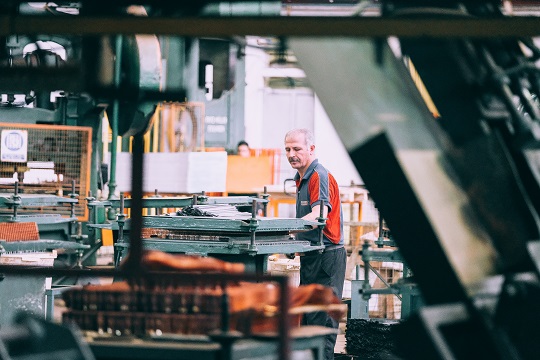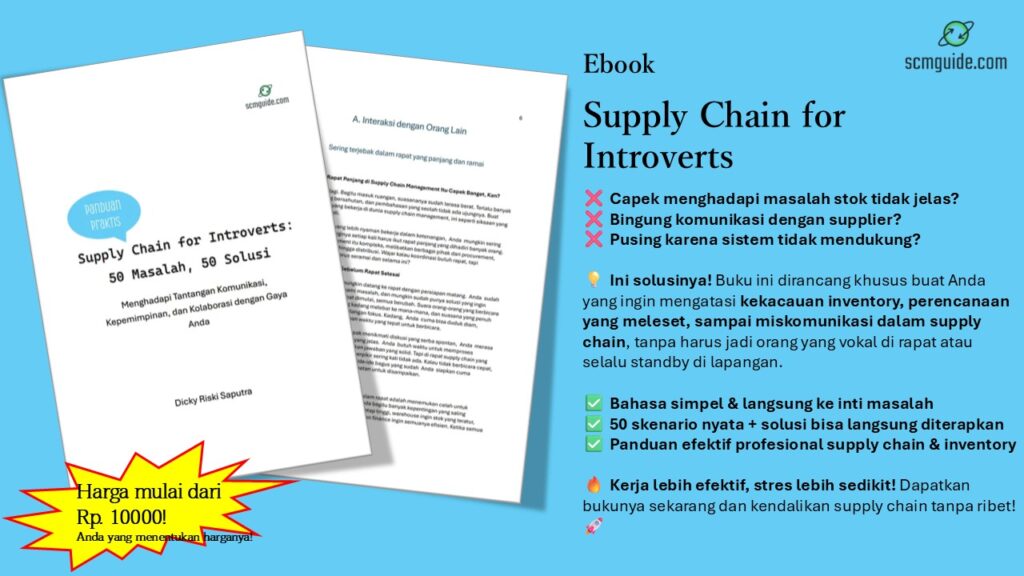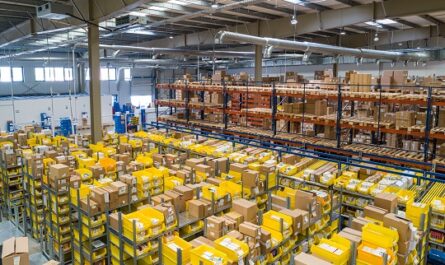Okay, let’s talk business in the real world! So, you know how it’s super important for companies to find the right balance between making stuff and selling it to keep growing and making money? Well, here’s the thing – lots of companies mess up when times get tough.
They forget to adjust how much they make when sales start going down. And guess what happens? Too much stuff gets made, there’s too much sitting around in the warehouse, and suddenly, they’re spending way too much on storage.
In this blog post, we’re going to chat about why making too much stuff is a big problem, how it hurts a company’s profits, and why it’s way better to make smart decisions that actually boost the bank account, instead of just relying on fancy numbers on paper.
Before we go further into this topic, don’t forget to follow my LinkedIn account. You’ll get more helpful insights on supply chain management there.
Table of Contents
Understanding the Temptation to Overproduce
Fear of Losing Market Share
Okay, picture this: when businesses see their sales going down, they start to worry about losing their cool spot in the market to other companies. It’s like a race, and nobody wants to fall behind. So, what do they do? They crank up production, thinking it’s the way to keep their spot on top.
In the wild world of business, keeping your piece of the market pie is a big deal. Companies spend loads on marketing, branding, and creating new stuff to grab more of the market share.
But here’s the twist - when sales start slumping, the fear of getting left in the dust pushes them to make even more stuff.

Now, here’s where it gets tricky. Pumping out more without the demand to match? That leads to a mountain of extra stuff just lying around, and that’s not good for the company’s money situation. It’s like trying to protect your turf but accidentally shooting yourself in the foot.
Having too much stuff takes up resources that could be put to better use. The money spent on making and storing all that extra stuff can end up hurting way more than the supposed benefit of keeping your spot in the market. So, it’s all about finding the right balance and not just assuming that more is always better.
Desire to Retain Skilled Labor
Alright, let’s talk about something a lot of companies stress over. When sales take a hit, they get all worried about keeping their skilled team on board.
Scaling back production might feel like a risk – like, will people start looking for other gigs if things slow down?
Companies know their skilled workers are gold, and losing them would be a blow. So, even when times are tough, they hesitate to cut back on production to keep everyone feeling secure.
But here’s the thing – having a skilled crew is awesome, no doubt. But being smart about it means finding a sweet spot. You can’t ignore the economic reality of the business. It’s like a tricky dance. You want to keep your team happy, but you also need to keep the company running efficiently and staying competitive without going broke.
So, how do you do it? It’s not just about sticking to the same old routine. Instead of automatically making more stuff to keep people in their jobs, companies should get creative. Maybe train folks for different roles, try out flexible schedules, or even mix things up to match what people actually want.
It’s like thinking long-term – you want to keep both your skilled crew and your company’s money situation in good shape. It’s about finding that balance, you know?
You might also like:
- Balancing Flexibility and Efficiency in Manufacturing for Better Supply Chain Management
- How Your Personality Affects Your Performance in Supply Chain Management
Assumption of Aligning Production with Maximum Capacity
Okay, so here’s the deal with a lot of businesses – they think it’s smart to always go full throttle with production, using every inch of their manufacturing gear.
Why?
Well, they’re all about squeezing every bit of efficiency and making the most out of what they’ve invested in.
Makes sense, right? Efficiency is like the superhero in manufacturing, and companies want to rock it.

The idea is that if you’re not maxing out your production gear, you’re not getting the most bang for your buck – the equipment, the people, the whole shebang. But hold up. There’s a catch. This mindset can mess things up when the market does its thing.
See, it forgets that what you can make and what people actually want can be totally different. So, you end up with too much stuff sitting around, and that’s a waste. The problem is, it’s like trying to stick to a plan even when the world around you is changing.
What businesses really need is to be nimble, to go with the flow. Instead of sticking strictly to what the machines can do, they should be tuning in to what the market is saying. Being flexible and shifting gears based on what people actually want – that’s the secret sauce to avoiding the whole overproduction mess.
The True Cost of Overproduction
Excess Inventory and Storage Costs
Alright, here’s the lowdown on overproduction – it’s like when you make way too much stuff, and suddenly your warehouse looks like a storage war zone. And guess what? Warehousing is no free ride. You’ve got rent, utilities, fixing stuff up, and people keeping an eye on all that inventory. The longer your goods chill in storage, the more these costs pile up.
So, picture this: You’ve got a mountain of products just hanging out, taking up space, and it’s costing you a pretty penny. Now, the smart move is to play matchmaker between what you make and what people actually want. That’s where the magic of strategic planning comes in.
By being all buddy-buddy with real demand, businesses can avoid drowning in excess stuff. That means more room in the warehouse and less cash flying out the door on storage. It’s like cleaning out your closet – keep what you need, ditch the rest.
With this approach, you’re not only saving on storage costs but also making sure your products hit the market at just the right time, without risking them turning into vintage items before they’re even sold.
Risk of Obsolescence
Alright, imagine you’ve got products sitting in storage for ages – it’s like a ticking time bomb for obsolescence. You know, things change fast in the market – trends, tech, what people like – it’s all on the move.
Now, here’s the catch: the longer your stuff sits there, the more it’s at risk of becoming yesterday’s news. What was cool before might not be the hot thing anymore. And let’s be real, no one wants to be stuck with a bunch of outdated goods.
In this fast-paced business world, being nimble is the name of the game. You’ve got to be like a superhero that can change costumes in a flash. That’s where flexibility comes in.
Businesses need to be quick on their feet, ready to adjust production at the drop of a hat. It’s not just about avoiding the ‘old stock’ label, but also about staying ahead of the game, meeting what people want now, not what they wanted last year. It’s like staying on trend – you don’t want to be the one wearing last season’s fashion, right?
You might also like:
- In Supply Chain Management, Past Experience Alone Is Not Enough for Success
- Why Collaboration is More Important in Supply Chain Management Than Competition
Carrying Costs Beyond Storage
Okay, so it’s not just about finding room in the warehouse. When you overproduce, you’ve got this whole entourage of extra costs following you around.
First up, you’ve got the carrying costs – like insurance. You’ve got to wrap your excess inventory in a safety net, in case something goes south. And let’s not forget about security – you’re basically hiring bodyguards for your goods. Nobody wants their extra stuff getting nabbed or damaged, right?
Now, here’s the kicker – some products are real divas. They need special treatment, like the VIPs of the inventory world. Maybe they want a specific temperature or humidity level, and you’ve got to cater to their needs. That means more cash flying out the door for fancy storage setups.
The lesson here? Before you hit the production button like crazy, you’ve got to know what your products want. Otherwise, you’re not just paying for storage space; you’re shelling out for insurance, security, and maybe even a five-star hotel for your high-maintenance items. It’s all about avoiding those extra costs by keeping production in check with what people actually want.
Strategic Capacity Management: A Real Profit Approach
Dynamic Demand Forecasting:
Alright, let’s talk about being the fortune teller of the business world – demand forecasting. It’s like having a crystal ball for your products.
So, there’s this cool thing called dynamic demand forecasting. It’s not your grandma’s prediction game; it’s like the high-tech version.

Picture this: fancy models that dig into everything – what people like, what’s hot in the market, and even stuff happening outside the business bubble. It’s like having a super-smart assistant that can see into the future of consumer behavior.
When businesses embrace these high-tech models, they’re basically giving themselves superpowers. They can see shifts in demand coming from a mile away and be ready for action.
And here’s the real game-changer – they don’t just predict once and call it a day. No, no. It’s an ongoing thing. Constantly checking the pulse of the market with real-time data, tweaking plans based on the latest sales figures and trends.
Why? Because it’s all about staying on your toes. You want to make sure you’re not drowning in stuff nobody wants. With dynamic demand forecasting, businesses can dance with the market, adjusting production as the demand tango changes. It’s like having a business GPS – always recalculating to make sure you’re on the right track.
Flexible Production Scheduling
Alright, buckle up – we’re talking about being the ninja of production. It’s all about being agile and quick on your feet.
So, picture this: agile production schedules. It’s like having plans that can do the cha-cha if the market suddenly decides to bust a move. These plans are flexible and can roll with the punches, adjusting to changes in demand without messing up the whole production party.
And then there’s this cool thing called just-in-time manufacturing. It’s like magic – you make stuff exactly when you need it. No extras, no stockpiling. It’s all about keeping things lean and mean. By syncing up production with demand, you’re not drowning in a sea of extra goods. That means less storage space needed, fewer bills for keeping things safe, and way less risk of your products turning into relics from the past.
It’s like having a superhero production plan that can dodge market curveballs and keep things running smooth and efficient. Because in the business game, it’s not about having a ton of stuff; it’s about having the right stuff at the right time.
You might also like:
- What are the Differences in Skill Sets Required for Automotive and FMCG Supply Chain?
- Supply Chain Transparency: Not About Dropping Underperforming Departments
Collaborative Supply Chain Management
Okay, let’s spill the beans on supply chain secrets. It’s all about being best buds with your suppliers and partners.
So, there’s this thing called collaborative supply chain management. It’s like having a big family where everyone talks, shares, and adjusts their plans together. Building strong relationships with suppliers is like having a hotline to change raw material orders on the fly when the demand mood swings. It’s not just about getting what you need; it’s about having a smooth and responsive supply chain that’s part of the grand plan for running things like a well-oiled machine.

But wait, there’s more! It’s not just about suppliers; it’s about your whole squad. Think distributors, retailers – everyone in the gang. By teaming up and sharing the scoop on what’s happening in the market, you’re like the Avengers of the business world. You’re not just reacting to changes; you’re proactively doing the superhero landing together.
So, the moral of the story is: don’t go solo. Build those relationships, keep the communication flowing, and be ready to switch things up together when the market throws a curveball. Teamwork makes the dream work in the world of supply chains.
Real-Time Monitoring and Analysis
Alright, let’s talk about being the Sherlock Holmes of production. It’s all about keeping a real-time eye on things.
So, you’ve got this fancy real-time monitoring system – it’s like having a superhero sidekick that never sleeps. This tech wizardry captures all the data on what’s cooking in production, and it doesn’t just sit there; it analyzes the heck out of it. Efficiency, bottlenecks, performance – you name it, it’s on the radar.
Now, here’s where the detective work comes in. You’re not just looking at production data; you’re throwing it into the mix with sales performance. It’s like comparing your recipe with what people are actually ordering. This regular checkup helps spot any hiccups – maybe you’re making too much or too little. And guess what? You’re not just sitting on this info; you’re making moves. Adjusting production levels like a chef tweaking the seasoning to get it just right.
It’s like having a production crystal ball – seeing the future of your demand and making sure you’re right on the money. Because in the business world, it’s not just about what you make; it’s about making what people actually want.
Cost-Benefit Analysis
Alright, let’s chat about being the financial detective in the business world. It’s all about weighing the pros and cons before making big moves.
So, there’s this thing called cost-benefit analysis – think of it like a superhero checklist for decisions. You’re systematically looking at the potential costs and benefits of, say, adjusting how much stuff you’re making. In the world of strategic capacity management, it’s like being Sherlock Holmes, but for business.

Now, here’s the kicker: you’re not just throwing numbers around. You’re looking at the real deal. How much is it costing you to keep that extra stuff in the warehouse? And on the flip side, what could you save if you dialed down production a bit?
The goal here is to be a smart decision-maker, not just ticking boxes. You’re looking at the true cost of keeping things piled up versus the savings from making less. It’s not about hitting some random benchmark; it’s about making choices that really beef up the bottom line.
So, by doing this financial jigsaw puzzle, you’re ensuring that your decisions are not just good on paper but are actually gold for the long-term success of your business. It’s all about making moves that make sense, not just following the numbers blindly.
Conclusion
Alright, let’s talk survival in the business jungle. It’s a wild ride out there, and you’ve got to be like a chameleon – adaptable to whatever comes your way.
So, imagine sales take a nosedive. The knee-jerk reaction might be to keep the production train rolling, right? Seems logical, but hold up – that can lead to a bunch of headaches, especially the overproduction kind. To be a business maestro, you need a toolkit.
First up, dynamic demand forecasting – it’s like having a business crystal ball. Then there’s flexible production scheduling, collaborative supply chain management, real-time monitoring – think of them as your superhero squad. And don’t forget the financial detective work with cost-benefit analysis – that’s your Sherlock Holmes.
By getting cozy with all these tools, you’re not just surviving; you’re thriving. It’s like having a treasure map to navigate the business storm. See, success isn’t just about ticking boxes on a checklist or hitting some random goals on paper. It’s about the real deal – the money in the bank.
So, take a strategic approach, be like a business ninja, and remember, it’s not just about surviving today; it’s about building a future that’s both sustainable and profitable. That’s the name of the game in the business wilderness!
I hope you find it helpful!
Please share this article with your colleagues so they can also benefit. For more insights on supply chain management, follow my LinkedIn account. You’re free to use all articles on this blog for any purpose, even for commercial use, without needing to give credit.

 by
by 


